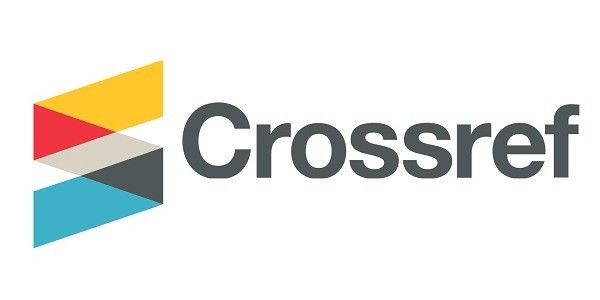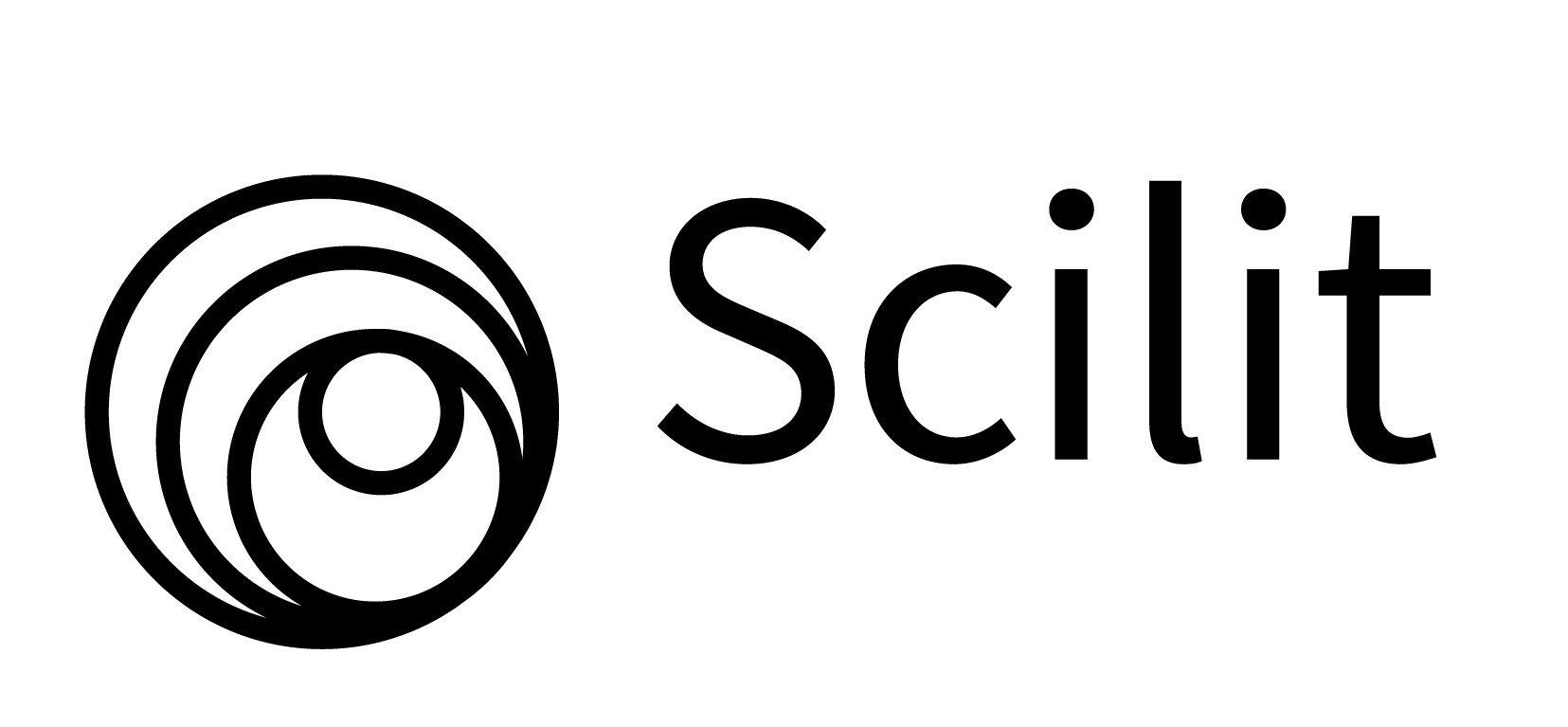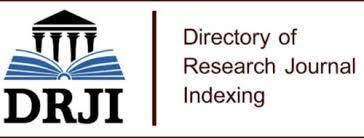Case Report
Snakebites Envenoming – Neglected Tropical Public Health Challenge
- Dr. Suresh Kishanrao
Corresponding author: Dr. Suresh Kishanrao
Volume: 1
Issue: 10
Article Information
Article Type : Case Report
Citation : Suresh Kishanrao. Snakebites Envenoming – Neglected Tropical Public Health Challenge. Journal of Medical and Clinical Case Reports 1(10). https://doi.org/10.61615/JMCCR/2024/SEPT027140918
Copyright: © 2024 Suresh Kishanrao. This is an open-access article distributed under the terms of the Creative Commons Attribution License, which permits unrestricted use, distribution, and reproduction in any medium, provided the original author and source are credited.
DOI: https://doi.org/10.61615/JMCCR/2024/SEPT027140918
Publication History
Received Date
26 Aug ,2024
Accepted Date
12 Sep ,2024
Published Date
18 Sep ,2024
Abstract
Snakebites are common in the developing world, but envenomation (SBE) is a small portion of it, that matters most to human lives and Public Health. Millions of people are bitten by snakes annually, but the outcome depends upon whether the snake is poisonous or not [1]. According to the Million Death Study (1998-2014), around 58,000 Indians die from snakebites every year, which is the highest rate in the world, out of an estimated 5 million snakebites annually, The actual is much higher, as only a small percentage of victims report as medical emergencies to health facilities. In India, the trend of using poisonous snake bites involving snake charmers and murdering came to light a decade. In cases where the nature of an injury or death is suspicious or allegedly intentional, including snakebites and animal bites, medical practitioners are required to register as MLCs in India.
Administration of polyvalent anti-snake venom (ASV) containing antibodies against cobra, Russell’s viper, and common krait has been in vogue since 1899. The currently available ASV in India is polyvalent and developed using venoms of big four venomous snakes. It is effective in 80% of snakebite cases. The Ministry of Health and Family Welfare issued a National Snakebite Management Protocol in collaboration with WHO in 2009 and updated it last in 2016. Anti Snake Venom (ASV) is on the list of essential drugs of the State, and procurement of these drugs is supported under the National Health Mission. But a formal “National Action Plan for Prevention and Control of Snakebite Envenoming in India” (NAPP&CSBE) was formulated in September 2022 and focuses on i) Empowering and engaging communities, ii) Ensuring safe and effective treatment iii) Strengthening health systems, and iv) Increasing partnerships, coordination, and resources, our national plan's strategies.
This article an ode to the Indian culture of “Nag Panchami” celebrated on 9th August 2024, is an attempt to summarize the progress in recommended strategies, challenges in minimizing snakebites, managing the cases of envenomization, and the programmatic progress made.
Materials & Methods
This article reviews the snakebite practices since the author entered the public sector health services in July 1968, the dearth of data related to snakebites and deaths, and improvement in the data in the last 2 years after notification. The case study of the review of the progress in the State of Karnataka, the home state of the author, & one of the better-performing states with a reasonably high burden of snakebites episodes forms the basis.
Outcome
A ceremonial launching, over-ambitious targets & typically slow progress in actions is a culture in national &State Government's programming in India, True to the tradition the progress in NAPP&CSBE has also been slow. The reporting of snakebites has improved but capturing full data from public and private health sectors in urban and rural areas is yet to fructify. Non-availability of data on incidence, morbidity, mortality, socioeconomic burden, treatment-seeking patterns & improving the quality of available ASV based on the regional venomous snakes, etc. are the major hindrances in achieving snakebite mitigation goals in India by 2030.
Abbreviations
NHM= National Health Mission
MOH&FW= Ministry of Health & Family Welfare
GOI= Government of India
NAPSE/SAPSE= National/State Action Plan for Prevention and Control of Snake Bite Envenoming
SBE=Snakebite Envenomation
ASV= Anti-Snake Venom
WHO= World Health Organization
IHIP= Integrated Health Information System
IDSP= Integrated Disease Surveillance Program
STG= Standard Treatment Guidelines
►Snakebites Envenoming – Neglected Tropical Public Health Challenge
Suresh Kishanrao1*
1MD, DIH, DF, FIAP, FIPHA, FISCD, Family Physician & Public Health Consultant, Bengaluru, India.
Introduction
Snakebites are common in the developing world, but envenomation (SBE), a small portion of it, matters most to human lives and Public Health. Millions of people are bitten by snakes annually, but the outcome depends upon whether the snake is poisonous or not [1]. According to the Million Death Study (1998-2014), around 58,000 Indians die from snakebites every year, which was the highest rate in the world, out of an estimated 5 million snakebites annually [2]. However, the actual number of snakebite cases is much higher, as only a small percentage of victims report to hospitals or clinics. Farmers and children who play around bushes (hide & seek game) or go to fetch coconut, mangoes, Guava, or other fruits are the most affected. Children often suffer more severe effects than adults, due to their smaller body mass. In India, the trend of using poisonous snake bites involving snake charmers and murdering came to light a decade. Snake bite cases are medical emergencies coming to health facilities. Russell’s viper has become common these days, especially near garbage dump yards, and water drains as reported by a recent study, in which 33 species of snakes are listed inside Bengaluru city, the capital Of Karnataka where the author resides. Indian well-researched snake keepers believe that too often people sensationalize snakes as aggressive and vicious, but the reality is, these animals are timid and shy, they usually don’t even open their mouths preferring to hide rather than attack, and only on rare occasions do they strike. They’d rather scare off humans than do actual harm.
In cases where the nature of an injury or death is suspicious or allegedly intentional, including snakebites and animal bites, medical practitioners are required to register as MLCs in India.
The average number of ASV vials used per person, is only one vial, for 75% of cases, around 8% needed two vials, 17% may require three vials, and rarely (1%) require four vials. Case fatality is around 15%.
The Indian government MOH&FW launched a national program to prevent and control snakebites just 2 years back in September 2022. India is the first country in Asia to launch a national program for the prevention and control of snakebites [4]. The Indian Snakebite Initiative (ISI) also has a mobile app called Big4 Mapper that can help people locate snake rescuers and hospitals that treat snakebites. As India's chapter of the Global Snakebite Initiative, ISI is building up local partnerships, collaborating with national and international experts in the fields of Herpetology Venomology. The program advocates to try these steps:
- Make the victim lie flat with the bitten limb below their heart.
- Remove any jewelry, tight clothing, rings, or watches from the bitten area, as they can act as a tourniquet when swelling occurs.
- Use a splint to immobilize the bitten limb and lightly bandage it. India’s ISI efforts will largely influence the global target of reducing by half the number of deaths due to snakebite envenoming by 2030, set by the World Health Organization (WHO).
Currently, very few countries including India have the capacity to produce snake venoms of adequate quality including the venom of most known 4-5 poisonous snakes in each country as manufacturers rely on common commercial sources. Unfortunately, that does not reflect the geographical variation that occurs in the venoms of some widespread species. The lack of regulatory capacity for the control of antivenoms in countries is another matter of concern. A significant challenge in the manufacturing of antivenoms is the preparation of the correct snake venom based on local varieties of venomous snakes.
Majority of the snakebites occur in rural/tribal areas in India, where health facilities lack the availability of ASV, and their health professional’s ability to handle or even refer snakebite cases after first aid contributes to higher deaths. Although, in India, ASV existed since this author entered the health system in 1968 and standard treatment guidelines (STGs) for the management of snakebites were published in 2017 [2]; the implementation of STG protocol remains poor in public and private healthcare facilities in India.
A recent press coverage from the author’s home state-Karnataka, reported 7476 snakebites and 47 snakebite deaths in the first 7 months of 2024 (Jan-July), as compared to 6595 bites throughout 2023 as per Integrated Health Information Platform (IHIP). Two months of June (1554) and July (1285) saw nearly 3000, snakebite cases.
This article an ode to the Indian culture of Nag Panchami celebrated on 9th August 2024, is an attempt to summarize the socio-cultural aspect of snakes, challenges in minimizing snakebites, recommended strategies of the ISI at three different levels, and the progress made so far.
Karnataka Case Study
The home State of the Author- Karnataka declared snakebite deaths and cases notifiable under the Karnataka Epidemic Diseases Act, 2020 in February 2023. This notification has improved the reporting of the snakebite's 5418 and 19 snakebite deaths in health facilities in the entire year 2023 to 6,596 snakebites and 36 snakebite deaths in the first six months of January to June 2024 alone [3]. The district-wise snakebites reporting was led by Hassan (419) followed by 373 in Chickballapur and 369 in Davangere. While Tumakuru and Koppal districts reported five deaths each followed by Chitradurga and Uttara Kannada with four and three deaths respectively. The State Health Department has directed all hospitals, including private facilities, to mandatorily enter all snakebite cases and deaths on the Integrated Health Information Portal (IHIP). However, the data from many hospitals is yet to be filed regularly. Karnataka is home to several region-specific 33 venomous snakes, popular among them are the king cobra, the Malabar pit viper, and the hump-nosed pit viper [3,10,11]. In a state-level training program on Tuesday 9 July 2024, for “State Action Plan for Prevention and Control of Snake Bite Envenoming (SAPSE)’ state authorities have directed districts to develop a strategic framework to combat snakebites effectively, but serious actions are yet lacking [9,16,17].
The Karnataka government has set up the State Action Plan for Prevention & Control of Snake Bite Envenoming (SAPSE to reduce the incidence and severity of snake bites and to minimize the associated health and economic burdens on affected vulnerable agricultural communities that have proximity to snake habitats. Currently, 172 district and taluk hospitals and a few community Health Centers (CHCs), are identified as Snake Bite Treating Centers, and the guidelines are issued delineating roles and responsibilities for all staff, ASV availability and required equipment, and A 24/7 ambulance service for transportation in these health facilities for prompt treatment free treatment under the Atal Bihari Arogya Karnataka (ABArK) scheme for all Below Poverty Level cardholders.
Medical audits by collecting case investigation forms for all snake bite fatalities are being initiated to analyze and improve treatment protocols by a designated team. SAPSE will serve as a guiding document for the healthcare system and stakeholders to take decisive action in addressing this public health challenge.
Bizarre Incidences of Snakebites in Indian Courts
- A 15-Year-Old Schoolboy Died on 27 August 2024 a Day After a Snakebite
The student had left home Tuesday morning to go to school but returned home by 10 AM because of the snakebite. Parents didn't think the bite was serious as the boy looked normal except for pain in his right leg at the bite site. They gave him some traditional medicine without taking him to any hospital. The boy showed signs of improvement and had dinner around 11 pm. However, at 5 AM, his family noticed his deteriorating condition, and before they could reach a hospital boy died. He had gone to pick coconuts from a grove near his school on instructions from his teacher when the snake bit him. More than 200 bereaved relatives and friends gathered at the school and protested the school management [4]
- Husband, Wife & Kobra, May 2020
On May 7, 2020, a disabled, 25-year-old Uthra was found dead at her home in Kerala’s Kollam after being bitten by a snake in her sleep. This was the second time she had been stung and that too at a time when she was recovering from the previous incident. Her parents suspected foul play in her death and filed a complaint with the police. The court case ended with the conviction of her husband, Sooraj S Kumar, found guilty of killing his wife by forcing a live cobra to bite her. The court sentenced him to 17 years in prison, two life sentences, and a fine of 500,000 rupees.
- Murdering MIL by Snakebite While Asleep
A woman, married to an army man who was posted away from his hometown, was regularly talking to her paramour over phone, irked by the nagging reprimands of her MIL, the daughter-in-law in conspiracy with her paramour and his friend, procured a poisonous from a snake charmer in Jhunjhunu district Rajasthan, Wrapped in a bag near her MIL’s bed on the night of June 2, 2018. The elderly woman was dead by the morning of the next day. The police arrested the three — the woman, her paramour and snake charmer, and the murder weapon (Snake). The snake charmer turned approver and gave evidence. The high court denied bail to both.
- Contrasting Snakebite Cases, Care-Seeking Practices and Outcomes in Hunsuru, Mysuru
A 60-year-old small farmer from Hunsuru taluk, Mysuru district. Ratnamma and her husband were planting ginger in their field, a kilometer from their house. Suddenly, she started screeching, “Haavu! Haavu!” (Snake! Snake!) after being bitten at the talus of her right foot. Her husband rushed to her and saw a ‘Spectacled Cobra, slithering away among the freshly planted ginger saplings. Ratnamma was conscious but agitated, her eyes shut. The husband followed local tradition and took her to a nearby healer in half an hour. Recognizing the severity of the injury, the healer advised Gowda to take her to a hospital, but she died en route, within 40 minutes of the snakebite due to a heavy dose of Venom.
A few kilometers from Ratnamma’s residence, a 29-year-old coconut farmer is recovering from a snakebite he received two weeks earlier. “He had climbed down from a coconut tree into a pile of fronds and felt a light sting on his right foot. People nearby said a snake had just slithered away. By evening, the bite area was bleeding and swollen.” His family took him to a local “snake hospital “an unlicensed establishment for treating snakebite victims on the outskirts of Hunsuru. Satish spent 11 days there, incurring costs of INR. 11,000. Back home, he is wary of returning to his farm but has to start the coconut harvest soon [5].
- Man, Mistakes Russell’s Viper to NV Python, Bitten & Dies
In a tragic incident, a resident of Bantwal, DK District Karnataka lost his life after being bitten by a Russell's Viper, which he mistook for a non-venomous python and attempted to catch it with his bare hands. The victim, a security guard, encountered the snake on Sept 4. Believing the snake to be a non-venomous one, he picked it up and began playing with it. The snake bit him, but he did not seek immediate medical attention, thinking it was harmless. After a few days, he began feeling dizzy and his condition rapidly worsened. His family took him to a private hospital, where he passed away on September 9th.
According to a local animal rescuer, many snakebites go unreported, and this is the season when snakelets and juvenile snakes are commonly seen, Russell's vipers are extremely agile and, when threatened, can leap into the air to bite. This case gained attention because the victim had handed his mobile phone to somebody to record the incident.
We live in a country full of nasty critters that bite. What was the school supposed to do? Run around the morning off and tell all the biting things to go out for the day? The world has gone mad. The sad thing is the school will pay up to keep its reputation. Make them look good, even though there was nothing they could do to prevent it. Suing everybody and everything is the American way. It has slowly crept into Australia and India is getting worse by the day. Patients having tests done and treatment for various health problems may have to sign some permission papers and get a list of risks involved in the procedure. Life is a risk and unless someone hurts another on purpose, I cannot see the reason for suing. It looks as if money is more important than the accidental loss of a life.
Discussion
The World Health Organization estimates around 5.4 million snake bite incidences and about one-third of them (1.8 to 2.7 million) envenoming resulting in approx. 150,000 deaths annually worldwide, and half a million amputations and permanent disabilities [1]. WHO listed snakebite envenoming as a priority neglected tropical disease in 2017 and advocated developing a global strategy to halve the number of snakebite-induced deaths and disabilities by 2030. Asia, with 2 million snakebites per year, leads followed by Africa and America. In India around 3 lakhs of snakebites and 2000 deaths are documented due to snakebite envenoming as per the Central Bureau of Health Investigation (CBHI) reports (2016-2020) [1]. It is also a fact that only a small proportion of snake bite victims across countries report to clinics and hospitals as the average annual frequency of snakebite cases.
Fig.1 Common Snakes in India

In India, there are 13 out of a total of 236 species of snakes known species that are poisonous. The old concept of four big names such as the common cobra (Naja naja), Russell’s viper (Dabiola russelii), saw-scaled viper (Echis carinatus), and common krait (Bungarus caeruleus) are highly venomous and believed to be responsible for most of the poisonous bites needs to be changed and efforts need to be made to determine all the medically significant species in India. Recently it was discovered that the humpnosed pit viper is capable of causing life-threatening symptoms. Most nonpoisonous snakebites cause panic reactions and local injury but do not harm the patient.
Administration of polyvalent anti-snake venom (ASV) containing antibodies against cobra, Russell’s viper, and common krait has been in vogue since Haffkine Institute in Mumbai, India, was a pioneer in developing Indian poly-specific anti-venom since 1899. The currently available anti-snake venom (ASV) in India is polyvalent developed using venoms of big four venomous snakes and is effective in 80% of snakebite cases. However, the unavailability of data on incidence, morbidity, mortality, socio-economic burden, treatment patterns, etc. are the major hindrances in planning for mitigation of snakebite in India lack of trained human resources and health facilities to treat snakebite patients remains a cause of concern [1,2].
Though Ministry of Health and Family Welfare issued a National Snakebite Management Protocol in collaboration with WHO for use by medical officers for the management of Snake bite cases updated last in 2016. All the States and UTs have been directed to include Anti Snake Venom (ASV) in the list of essential drugs of the State, and procurement of these drugs is supported under the National Health Mission.
In terms of the progress made in the last 2 years of launching the National Action Plan for Prevention and Control of Snake Bite Envenoming (NAPSE), one sees an increase in the number of snakebites and deaths reported. The actual implementation of the initiative appears to have started in FY 2024-25 only But there is hardly any assessment of following the standard protocol advocated among the cases reaching the hospitals or collating the signs and symptoms by specific venomous snakes or monitoring of the timeliness of starting the ASV use, dosage, and effectiveness of ASV by species-specific bites and efforts to improve the quality of ASV by including recently identified snakes and snake venoms.
In India venomous snakes are identified by triangular-shaped heads, pupils with slits like a cat, and thick bodies. Some venomous snakes that have pits just behind their noses that they use to detect prey are classified as pit vipers, e.g., rattlesnakes and copperheads. A press report in January 2024 listed 10 top Indian Venomous snakes as i) Indian Cobra, known for its proud hood and neurotoxic venom, ii) Russel’s Viper creates hemorrhagic shock and kidney failure iii) the Common (Bengal) Krait delivers the most lethal venom that causes muscular paralysis, iv) Saw scaled Viper produces 18 mg venom by dry weight that causes local and systemic symptoms v) Hump nosed pit Viper found in Hilly terrains of South India, has rarely systemic effects vi) King Cobra, it venom affects respiratory Centre in the brain causing death by Cardiac failure vii) Malabar (Rock) Pit Viper bite causes local swelling and pain lasting for 2-3 days viii) Bamboo pit Viper produces Neuro and Hemotoxic venom bites when threatened ix) Banded Krait comes in Gold and Black color bands x) Andaman pit Viper found in A& N Islands [3]
Fig 2. Common Venomous Snakes in India

The snakes are inhabiting localities where there is more rubbish and more rodents, which attract snakes contributing to the cycle of increased snakebites and deaths. This increased snake habitation; bites and deaths are mainly due to human encroachment of snake habitats. Though snakes do not harm unless provoked as humans invade their homes, they appear to invade and frequent our habitations.
In most regions in rural India, the local custom is to take victims to folk healers rather than hospitals and it is also a fact that most rural hospitals are not equipped with Antivenom and trained staff to handle snakebite poisoning. The best-known medical management is giving Anti-venoms as early as possible to stop irreversible damage from venom. A snake-bitten person must not travel alone to the hospital because people with snakebites can become dizzy or pass out.
Burden of Snakebites Envenomation in India
In India, snakebite is a prominent problem in rural and peri-urban areas in the states of Bihar, Jharkhand, West Bengal, Madhya Pradesh, Odisha, Uttar Pradesh, Andhra Pradesh, Telangana, Rajasthan, and Gujarat. Million Deaths Study from 2008 to 2014 [9], a nationally representative study from 2000 to 2019 covering 87,590 snakebites estimated that India had 1.2 million snakebite deaths on an average of 58,000/year [9]. It predominantly affects lower socioeconomic segments of society and high-risk groups/vulnerable populations, agricultural workers, herders, fishermen, children aged 10-14 years, and people living in poorly constructed houses, etc. [4].
The clinical Manifestations
A collation of the clinical manifestations of the venomous snakebite in India includes paralysis, hemorrhage, tissue damage irreversible kidney failures, and miscarriages as pregnant women are highly sensitive to venomous snakebite hemorrhage [3]. Some Indian studies report that most of the bites (60%) occur in the day between 6 am to 6 pm. The majority (57%) of the cases occur at home, followed by on the farms (37%). In nearly all cases, the type of snake was not known. However, most of the bites among those reaching health facilities are poisonous, showing one or the other type of toxicity in 90% of cases. Various symptoms reported include one-third having vomiting, around 6% having nausea, and 3% having a fever. Breathing difficulties were reported in 6% of patients. The local symptoms at the site of the bite include edema 50%), bleeding (15%) erythema, (redness), and discharge at the bite site (around 15% each) and surrounding skin induration in about 10%. The local temperature at the bite site is raised in about a quarter of patients compared to body temperature, and Pigmented changes are observed in about 20%. About 2% of patients have a cold, clammy temperature at the bite site. Gangrenous changes are noted in about 10% of patients [3]. General apprehension is universal, and most would not have seen or been able to identify the type of snake that bit them even if seen. The complications observed in descending order were neurotoxic followed by local toxicity and haemato-toxicity showing signs of paralysis of respiratory muscles that restricts breathing, and bleeding disorders leading to a fatal hemorrhage. Case fatality is highest due to Neurotoxic symptoms, followed by local toxicity, hematological toxicity, and rare renal complications. Ventilatory support is needed in half of the patients, and about 1 in 10 of such patients succumb, and the rest recover [1,3,4,5].
Severity of Envenomation
Local and systemic signs and systemic symptoms are the parameters used to decide the envenomation severity, which is classified as follows.
Dry Bites
These are snakebites without any venom deposition, with no systemic signs or symptoms beyond a puncture wound. Indian studies estimate that less than 10% of pit viper bites and 30-50% of coral snake bites are dry.
Minimal Envenomation
These are characterized by local bruising, tenderness immediately adjacent to the bite site, and an absence of laboratory abnormalities and systemic findings.
Mild Envenomation
The local damage extends several centimeters from the bite site, all the way to the nearest major joint without systemic signs and biomarker abnormalities.
Moderate Envenomation
These are associated with non–non-life-threatening signs & symptoms (e.g., vomiting, hepatotoxicity without bleeding) and/or local damage beyond two joints.
Severe Envenomation
These result in extensive local damage (e.g., beyond two joints) and/or significant systemic toxicity (e.g., hypotension, airway swelling, muscle paralysis).
History of Snakes, Snake Charmers, and Snakebites
In Sanskrit, the word ‘Naga’ is used to refer to the cobra or snakes in general, and Nag Panchami is celebrated on the 5th day of solar fortnight of every “Shravana” month usually falling in August of a calendar year. The recent one was celebrated on 9 August 2024. The Hindu mythology portrays Lord Shiva decorated with a Cobra around his neck, parading his fearlessness and immortality. For the Western World India, is known as the land of “snake charmers”. It has deep roots in snakes being revered as symbols of supernatural power and important objects of worship and most people don’t like pelting stones or hurting them even if they see or even after biting.
Epidemiology of Snakebite & Envenomation
Snakebite is a neglected global public health problem affecting many tropical and subtropical countries. About 6 million people are bitten by snakes globally every year around 2.5-3 million of them envenoming are reported. Snakebite poses a significant public health challenge, leading to disabilities and psychological consequences in the aftermath of snakebites, particularly in underdeveloped districts of all states in Inda. It typically affects predominantly poor, rural communities in tropical and subtropical countries throughout the world. A higher case fatality rate is observed in victims <5 years of age. Children get exposed to snakes while playing or at the site of agricultural fields. Snakebite envenoming is an occupational and environmental disease, and the high-risk groups include - agricultural workers, herders, fishermen, hunter-gatherer tribes, firewood collectors, etc. Pregnant women are a highly vulnerable group. This author recalls encountering snakes’ snakes around his official residences in 1968 -1976 in the PHCs, where he worked, as PHCs were located far away (1-2 km) from the main village habitat. Over the years since the 1980’s, the PHCs have become part of expanded villages, and encountering snakes and snakebites has diminished. A simple mathematical calculation indicates that around 8000 people are exposed to snakebites every day, and 400 people die. In 2019, the age-standardized mortality rate for snakebite was estimated as 0.8 per/100,000 population, which might be 1/100,000 currently in 2024.
In India, as per a systemic literature study around 60,000 deaths occur out of an estimated 3-4 million snakebites annually. It is a well-known fact that only a small proportion of snakebite victims across countries report to the clinics and hospitals and the actual burden of snakebite is grossly underreported. The burden of premature death because of snakebite envenoming in India is estimated at 3.5 million disability-adjusted life years, out of a global burden of 7 million disability-adjusted life years in 2024. (projections from 2019 data).
In India, agricultural laborers face heightened vulnerability to snakebites due to dependence on traditional, non-mechanized, and cost-effective farming methods. The risk increases during the monsoons, as this coincides with both heightened agricultural activities and snake breeding seasons. Poor laborers are exposed to precarious living conditions, inadequate lighting, sleeping on the ground, and the use of outdoor toilets or open-air defecation practices increases the encounter of snakes. The peak of Snakebite cases as per the reported data on IDSP-IHIP since 2022 confirms that there has been an increase in a number of cases from June to September over the years.
Fig.3- Monthly Reported Snakebites in India 2021-23, showing increased numbers in June - September each year. Source-IHIP, CDC, GOI

First Aid
Case management at the field level includes reassurance, immobilizing the bitten limb, and transporting the victim to the nearest definite treatment facility.
Primary Clinical Diagnosis
Though it is important to identify the type of snake often it is not possible. Ask the victim’s relatives or examine the killed snake using the snake’s identification material. For a clinician, the exact time of the bite and progression of signs and symptoms is the key approach.
Hemostatic abnormalities are the prima facie evidence of a viper bite. Cobras and kraits do not cause hemostatic disturbances. Saw scaled vipers do not cause renal failure whereas Russell’s viper and hump-nosed pit viper do. Russell’s viper can also manifest with neurotoxic symptoms in a wide area of India.
Investigations
Twenty-minute whole blood clotting test (20WBCT) is considered a reliable test of coagulation that can be carried out at the bedside. A few milliliters of fresh venous blood should be placed in a fresh, clean, and dry glass test tube and left undisturbed at ambient temperature for 20 minutes. After that tube should be gently tilted to detect whether blood is still liquid and if so then blood is incoagulable. The test should be carried out every 30 minutes from admission for 3 hours and then hourly after that.
Other Useful Tests
- Hb/platelet count/peripheral smear prothrombin time (PT)/ activated partial thromboplastin time (APTT)/fibrin degradation products (FDP)/D-Dimer
- Urine examination for proteinuria/RBC/hemoglobinuria/ Myoglobinuria
- Biochemistry for serum creatinine/Urea/Potassium
- ECG/X-ray/CT/Ultrasound FOR identification of clot in viperine bite
- Oxygen saturation/arterial blood gas (ABG)
- Enzyme-linked immunosorbent assay (ELISA) to confirm snake species.
Treatment
- Pain relievers immediately after bite with oral paracetamol or tramadol
- Anti-snake venom (ASV) is the mainstay of treatment. In India, polyvalent ASV effective against all four common species of Russell’s viper, common cobra, common Krait and saw-scaled viper is available. ASV is produced both in liquid and lyophilized forms. Liquid ASV requires a reliable cold chain and has a 2-year shelf life. Lyophilized ASV, in powder form, has a 5-year shelf life & requires to be kept cool only. Both are equally effective.
Anti-Snake Venom Administration
Anti-snake venom should be administered only when there are definite signs of envenomation, i.e. coagulopathy or neurotoxicity. Only unbound, free-flowing venom in the bloodstream or tissue fluid, can be neutralized by it. It carries the risk of anaphylactic reactions, and the facility must be prepared to handle such reactions. In the absence of definitive data on the level of envenomation, symptomology alone is not a useful guide. Any ASV regimen adopted is only a best estimate.
Prophylaxis for Anti-Snake Venom Reactions
There are no systematic trials of sufficient power to show that prophylactic regimes are effective in preventing ASV reactions.
Anti-Snake Venom Test Dose
Test doses have not been shown to have predictive value in predicting anaphylactic reaction or late serum sickness and are not recommended.
Initial Dose
- Mild Envenomation (systemic symptoms manifest > 3 hours after bite) neurotoxic/hemotoxic 8–10 Vials
- Severe Envenomation when systemic symptoms manifest within 3 hours after the bite for symptomatic or diagnosed by neurotoxic or hemotoxic signs may need up to 8 Vials irrespective of the age.
Further Doses
Subsequent doses will depend on the response to the initial dose.
ASV is administered either as an intravenous infusion (5–10 mL/kg body weight) or as a slow intravenous (IV) injection i.e. 2 mL/min). To be administered over 1 hour at constant speed and patient should be closely monitored for 2 hours. In victims requiring lifesaving surgery a higher initial dose of ASV is justified (up to 25 vials) solely on the presumption that coagulation will be restored in 6 hours.
Indian polyvalent antivenom is a sterile preparation of equine (horse) immunoglobulin fragments F(ab')2. Each milliliter of reconstituted antivenom has the potency to neutralize the venom of the following snakes: 0.6 mg of dried Indian cobra venom. 0.6 mg of dried Russell's viper venom. 0.45 mg of dried saw-scaled viper venom and 0.45 mg of dried common krait venom [10].
The Process of Snake Venom Extraction
- Milking Venom: The snake is securely held by hand just behind the head. The fangs are anchored to a collection vessel such as a Petri dish. The fingers are squeezed, and the venom slowly drips from the fangs into the collection vessel.
- Lyophilization: The snake venom is freeze-dried (lyophilized) and reconstituted in sterile water at a particular concentration.
- Hyperimmunization: Large animals like horses are immunized with gradually increasing doses of venom, which elicits an immune response within the animal, generating large amounts of antibodies.
- Bleeding: After a few months, the horses bled, and the serum containing the antibodies is separated.
- Antibody Purification: The antibodies are treated with enzymes to cleave the F(ab’)2 fraction and then purified. The final product is either dissolved in sterile water (the final product is a liquid) or freeze-dried (the final product is a powder).
There are seven Indian companies that produce antivenin up to 8 million vials a year, most of it derived from the Irula Co-op venom. Unfortunately, there are several other poisonous snakes in India, against which this polyvalent antivenom will be ineffective. There are a few challenges in producing antivenom for all poisonous snakes in India. First, producing antivenins for India’s different regions is difficult. Some snakes aren’t considered medically important, despite their bites causing severe pain, disability, neurological issues, and paralysis, they are not life-threatening. Lethal snakes are restricted to specific areas of the country, therefore, producing the antidotes must be affordable and region-specific if not State /district - specific without compromising on quality. Secondly to make such diverse antivenin effectively acting on a spectrum of regional snakebites, would entail catching and milking snakes from different parts of India & the biggest challenge is there isn’t enough skilled labor for this [11].
National Action Plan for Prevention and Control of Snakebite Envenoming (NAPSE) 2022
A National Consultation formulated the “National Action Plan for Prevention and Control of Snakebite Envenoming in India” in consultation with a Core Committee member, Clinicians, WHO, State Nodal Officers, NGOs, Communication experts, etc. It provides a broad framework for the management, prevention, and control of Snakebite envenoming in India, echoing the global voice of reducing the disability and deaths due to snakebite envenoming by half by 2030 and envisages all strategic components, roles and responsibilities of concerned stakeholders Based on the WHO's strategy focuses of i) Empowering and engaging communities, ii) Ensuring safe and effective treatment iii) Strengthening health systems and iv) Increasing partnerships, coordination, and resources, our national plan's strategies.
Table 1. The Challenges & Recommended Strategies for Addressing the Problem in NAPSE
|
Key Challenges |
Recommended Strategies |
|
At Community Level |
|
|
• Lack of knowledge on venomous &non-venomous snakes, appropriate preventive measures |
• Active engagement of forest department and herpetologists for identification and mapping of circulating venomous and non-venomous snakes in a specific geographical region.
• Community empowerment and active engagement of community leaders, religious leaders, ASHA’s, AWWs & School teachers to increase awareness on prevention, first aid, and early transport of snakebite patients to the nearest health facility.
• Adequate training to the traditional healers (like TBA in 1960-70s) & H&W Centre staff to identify red flags in snakebite victims & urgent referrals to healthcare facilities.
• Promote local Influencers to Create Awareness |
|
• Use of harmful first aid methods- tourniquet, incision on bite area, etc. chanting of mantras, use of unproven herbal medicines |
|
|
|
|
At the Health System Level |
|
|
• No attention paid to snakebites in the medical curriculum. |
• To include snakebite management in the curriculum of Medical and Nursing Schools and in-service training institutions of the State Public Health Departments. |
|
• No exposure to snakebite treatment during internship. |
• Introduce compulsory exposure for at least 5 case management in the Internship. • Periodic training of MOs in PHCs, and CHCs as per the latest national snakebite management protocol. |
|
• MOs in State health services especially at Health and Welfare centers, PHCs & Taluka & District hospitals have no experience with snakebite management. |
• Empowerment of frontline healthcare providers (ASHA, ANM, MPW) on prevention, first aid, and timely referral for management of SBE. • Mandatory short-term training of medical graduates during internship and as a part of the induction training on joining as MOs in the State health services and developing management skills in doctors of all systems (Allopathy, AYUSH, etc) |
|
•Standard protocol for treating snakebites not known to many |
• Standard protocol released in 2022 to be popularized and implementation and lives saved be monitored |
|
• ASV intradermal skin test recommended by ASV manufacturers |
• ASV manufacturers in India (public and private sector) should immediately revise the ASV insert and remove the recommendation on ASV intradermal skin testing. |
|
• Irrational use of the intradermal ASV test leading to wastage of precious ASV. |
• Training of nurses on the treatment of snakebites with emphasis on ASV administration. |
|
MOs at PHC, and CHC do not stock or have confidence in ASV administration, for fear of anaphylaxis. |
• To ensure a safe, adequate supply of ASVs and other emergency medicines required for snakebite management. |
|
• Lack of life support skills & Quick transport |
Mandatory short-term training of medical graduates in the health system and Provision of Transport (108) |
|
At the Policy Level |
|
|
• Huge gap between a number of snakebite deaths reported from direct surveys and hospital-based data. |
• Making the disease notifiable would help to identify hotspots for SBE and directed attempts to reduce the incidence and mortality can be made. •Making mandatories for all secondary & tertiary care hospitals, to stock ASV, treat the patients, and report SOS |
|
• Snakebite is not a notifiable disease. |
• Online data entry of snakebite cases into a dedicated snakebite portal by all government and Private sector hospitals |
|
• The existing guidelines of MJPJAY+PMJAY provide Rs. 50,000 for snakebite patients requiring ventilator support. |
• Revision of policy to include all patients of SBE for free of cost treatment in all healthcare facilities (public and private hospitals). Private hospitals may be reimbursed at an agreed rate. |
|
• Patients who do not need ventilator support are excluded from getting the benefit of MJPJAY + PMJAY leading to extensive financial burden. |
• Financial assistance for deaths due to SBE. The cost of treatment be borne by the national initiative. |
|
• SBE disproportionately affects the rural populations, migrant workers, and people engaged in agriculture. |
• Directed efforts in states with a high proportion of vulnerable populations and high caseloads will ensure effective administration and would help in cutting the cost of implementation. |
Though the program was launched in September 2022, budgetary provision was made in FY 2023-24 and state-level training just begun in July 2024. The progress in the last few months indicates that the herculean task has just begun and it’s going to be a long race to achieve the goal of reducing the snakebite cases and deaths in the remaining 6 years. The fact is that most states do not even know the total burden, current practices, human resource capabilities, ASV availability, and its use in most needy rural and tribal areas of the country. Following is the assessment by the authors based on the data available on public platforms (NHM) and print media [11]
- Training health professionals to provide first aid, diagnosis, & management of snakebite cases
Most States had their first state-level one-day training for district nodal officers, district Epidemiologists, Clinicians, and Anesthesiologists at the district /Medical College hospitals, only recently as was Karnataka (July 2024) in FY 2024-25. Another similar one-day training for intra-district Medicine specialists, anesthetists, and medical officers at BPHC, FRUs, and Maternity Hospitals makes the remaining 6 months of this FY even if done on a war footing basis. Most states had provided funds in FY 2023-24 itself, but the state-level training itself had been completed recently. Hopefully, most districts have completed the training needs assessment, but organizing the required number of training courses may spill over to 2024-25 too, as usually it takes 2 years, to complete any program training based on previous programs' expenses. The limitation of such one-day training is it provides basic orientation of program management and not hands-on training in the management of a snake bite case.
- Increasing Access to Treatment
The State claims that snake venom is made available at all primary health care units and higher government health facilities for prompt treatment free across government health facilities, but the ground reality based on this author's visits to half a dozen district and a dozen sub-district health facilities identified by the State, is that nearly half of the facilities either do not have the ASV round the clock or the staff is not confident to initiate ASV vaccination.
- Establishing and strengthening Regional Venom Centers
Yet to be Announced.
- Researching anti-venom and diagnostics
Guidelines issued but no feedback yet.
- Mapping and monitoring facilities with anti-snake venom
Guidelines in place actual action is yet to begin
- Community outreach
To spread awareness about snakebite prevention & management: Print media /Press releases issued in July 2024 only
Conclusion
Humans & livestock in rural & Tribal areas are vulnerable to snakebites as 70% of the population lives & depends on agriculture, hunting, fishing, forestry & poultry for livelihood.
Along with the burden on the human population, snakebites cause heavy economic losses by affecting the domestic animals & livestock population, as livestock CFR is around 47%.
A combination of strategic and risk-based placement of antivenoms, trained healthcare staff, availability of affordable, safe & effective antivenoms & equipment, along with the promotion of responsible health-seeking behaviors, can give better outcomes for snakebite patients & a considerable reduction in snakebite-related morbidity, mortality and economic loss.
The combination of poor geographical access to and inadequate health services in remote communities hinders the chance of receiving timely treatment. Wildlife buffers for the movement of urban wildlife, better garbage disposal, and upkeep of stormwater drains are needed for the peaceful co-existence of snakes in human-populated areas.
Therefore, there is a dire need to integrate the national snakebite prevention and control program with institutions such as the National Institute of One Health and other institutions of human and veterinary medicine at Districts, States as well as central levels.
- National Action Plan for Prevention and Control of Snakebite Envenoming (NAPSE).
- Million-death-study-project.
- The study of clinical profile & outcome of patients with snakebite in a rural community. (2021). Samirkumar Patel, J Family Med Prim Care.10(4): 1661-1665.
- A Schoolboy dies of a snake bite in Doddaballapur.
- Snakebites kill more Indians than all other wildlife combined, Vikhar Ahmed Sayeed. (2024).
- Snakebite envenoming. (2023).
- 36 snakebite deaths were reported from Jan. to June 2024 in Karnataka as opposed to 19 in all of 2023, The Hindu Bureau.
- Top 10 deadliest snakes found in India. (2024).
- Trends in snakebite deaths in India from 2000 to 2019 in a nationally representative mortality study. Suraweera W. 9: 54076.
- Indian Snake Antivenom - An Overview, Kaushik Bharati. (2019).
- India, Need New Antidotes to Curb Deadly Snakebites. (2023).
- Thakur V. (2022). Sociodemographic profile of patients with snakebite in Jharkhand. Int J Adv Med. 9(10): 1001.
- Snakebite envenoming India. (2023).
- Indian Snakebite Initiative, Romulus Whitaker. (2019).
- National program for prevention & control of snakebite in India: Key challenges & Recommendations, Rahul K. Gajbhiye. (2023). 157(4): 271-275.
- Karnataka-takes-steps-to-combat-snakebites/S Vivan Bangalore. (2024).
- Karnataka govt sets up SAPSE to reduce snakebites and minimize associated economic burdens, Nandita Vijayasimha. (2024).
Download Provisional PDF Here
PDF




p (1).png)




.png)




.png)
